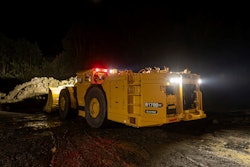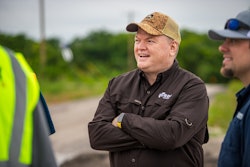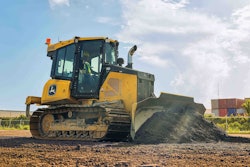
Our team was thrilled to get insight from Kenneth D. Simonson, chief economist for The Associated General Contractors of America (AGC) for the State of the Industry Report. In this Q&A, he details where he sees the industry going in 2024.
What were some challenges for the construction industry in 2023?
Almost universally, contractors reported difficulty finding qualified workers. Demand for most types of projects increased, but the unemployment rate for workers with construction experience fell to 4% or less.
Is pandemic fallout still affecting the construction industry, including supply chain issues or other problems?
Supply-chain problems largely cleared up with the notable exception of electrical equipment such as switchgear and transformers, for which lead times reached unprecedented lengths. The post-pandemic labor market has added to challenges for contractors because many jobs outside construction can now be done remotely on a hybrid basis with flexible hours, or with the ability to leave on short notice—features that aren't possible for onsite construction jobs.
In what technological areas do you see the potential for the most innovation in 2024?
Contractors are investing or experimenting on many fronts. Large firms are making greater use of robots and offsite production. There is strong interest in artificial intelligence, but it isn't clear how quickly or widely it will be applied to construction paperwork or production.
What innovations or improvements do you anticipate in construction equipment in 2024?
Further evolution and wider adoption of robotics and perhaps 3D printers.
Which construction sectors face the most hurdles in the move toward electrification? Alternative fuels? Automation?
The power demands, working hours and remoteness of fuel/recharging sources make adoption of electric and alternative-fuel, large equipment very difficult. The small production runs for each type of equipment, compared to the many thousands of vehicles that automakers design and produce, make it hard to bring costs down.
Designers of software and other automation tools face the challenge of ever-changing working environments and designing products that suit a large enough customer base to merit customizing, while construction firms may find that non-customized products don't fit their needs.
In what ways do you expect the infrastructure bill to affect the construction industry and contractors?
Funding is slowly making its way into actual bid lettings and contract awards. I expect this process to accelerate in 2024, but there are still aspects of the legislation that need to be defined, clarified or made workable.
What will be the biggest challenge in 2024 for the industry?
Finding qualified labor is likely to be the biggest challenge for years to come. Construction has relied more than most sectors on foreign-born workers, who have not returned to pre-pandemic levels. Also, the growing number of workers reaching retirement age especially affects construction, since workers leave (not necessarily retire) jobs requiring hard physical labor in tough working conditions earlier than … jobs in economics or journalism.



















